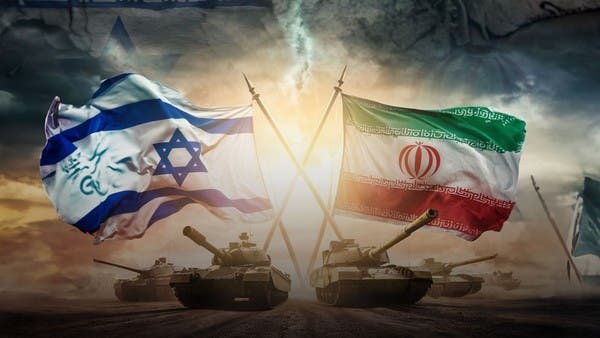
⚠️ The Iran–Israel War Enters a New Phase
The decades-long proxy conflict between Iran and Israel has escalated into direct military confrontation since mid-June 2025. This marks a historic shift, as airstrikes, cyber-attacks, and proxy engagements gave way to large-scale military operations and strategic warfare.
🏛️ Historical Background
- Diplomatic ties were severed following Iran’s 1979 Revolution, shifting the relationship toward hostility.
- Despite brief cooperation in the 1980s, the relationship deteriorated, accelerating proxy support and escalating espionage and cyberattacks.
- The collapse of the 2015 nuclear deal spurred Iran’s rapid enrichment, triggering existential fears in Israel.
🔥 Catalytic Events: Operation Rising Lion & Midnight Hammer
Operation Rising Lion (Launched June 13–24, 2025)
- Primary targets: Iran’s nuclear facilities (Natanz, Fordow, Isfahan), IRGC leadership, missile launchers, and air-defense systems.
- Successes: Significant destruction of air-defense batteries—neutralizing over 70, including mobile SAM systems. Key figures, such as IRGC Commander Hossein Salami and nuclear scientists, were killed.
- Tactics: Israel pioneered hybrid warfare—deploying Mossad-spawned drone strikes to dismantle defenses ahead of air raids, supported by AI surveillance and stealth aircraft (businessinsider.com, en.wikipedia.org).
Operation Midnight Hammer (U.S.-led strikes on June 21–22, 2025)
- Scale & execution: Seven B‑2 stealth bombers dropped 14 GBU‑57 bunker-buster bombs, launching from Missouri with extensive support—including aircraft tankers and decoys—targeting Fordow, Natanz, and Isfahan (airandspaceforces.com).
- Impact: U.S. officials estimate the strikes delayed Iran’s nuclear weapons timetable by an estimated two years, although concerns remain over hidden uranium caches and warhead concealment (airandspaceforces.com).
💥 Conflict Impact & Civilian Toll
- Civilian casualties:
- Israel: 28–29 civilians killed, over 3,200 injured; more than 9,000 displaced.
- Iran: Estimated 610 civilian deaths and at least 4,700 injuries amid aerial bombardments and cyberattacks (thetimes.co.uk).
- Displacement & humanitarian crisis:
- Over 100,000 people fled Tehran, triggering a humanitarian crisis in northern provinces including Gilan and Mazandaran (en.wikipedia.org, en.wikipedia.org).
- Gaza faces increased strain as conflict merges; regional humanitarian organizations warn of worsening famine risks.
🌐 Regional & Strategic Fallout
- Iran’s strategic options:
- The Strait of Hormuz region was threatened with drone and mine operations, underscoring broader leverage.
- Proxy forces—Hezbollah, Iraqi militias, and Houthi rebels—were significantly weakened, though smaller-scale operations continue (businessinsider.com).
- U.S.–Israel alignment:
- Israel commended U.S. strikes as bolstering their campaign and preventing Iranian nuclear reconstitution (news.usni.org).
- Critics caution that long-term nuclear rollback cannot rely solely on military strikes.
- Domestic strain in Iran:
- Despite Tehran’s defiance, losses in infrastructure, leadership, and a politically weakened IRGC threaten future stability and may accelerate internal reforms (businessinsider.com, ft.com).
🕊️ Ceasefire & Diplomatic Status
- Ceasefire in place as of June 24: Called by President Trump and mediated by Qatar, with conditional compliance from both Iran and Israel (washingtonpost.com).
- Mutual December claims: Both sides declared victory, though missile launches and airspace violations have tested the truce’s durability (theguardian.com).
- Global pressure: Arab nations and the UN have urged a durable diplomatic path forward to avoid further conflict.
🔮 Future Scenarios
📈 Optimistic Path
- High-level mediation, security assurances, nuclear transparency protocols, and proxy de-escalation could lead to lasting calm.
📉 Pessimistic Trajectory
- Iran may quietly rebuild its nuclear stockpiles; Israel may re-launch strikes if threatened, risking cyclical conflicts.
- Pressure on Iran’s leadership may ignite domestic unrest or empower more aggressive factions.
🧭 Final Takeaway
This conflict represents a watershed moment, shifting from covert battles to overt, multi-state military dynamics. The unprecedented military coordination between Israel and the U.S. has forced Iran onto the back foot, yet the human cost, geopolitical instability, and lingering nuclear risk demand urgent diplomatic action. The ceasefire offers a fragile window; whether it evolves into enduring peace or ruptures into renewed war depends on swift, enforceable diplomacy and robust security guarantees.
Discover more from News-Nexuses
Subscribe to get the latest posts sent to your email.






